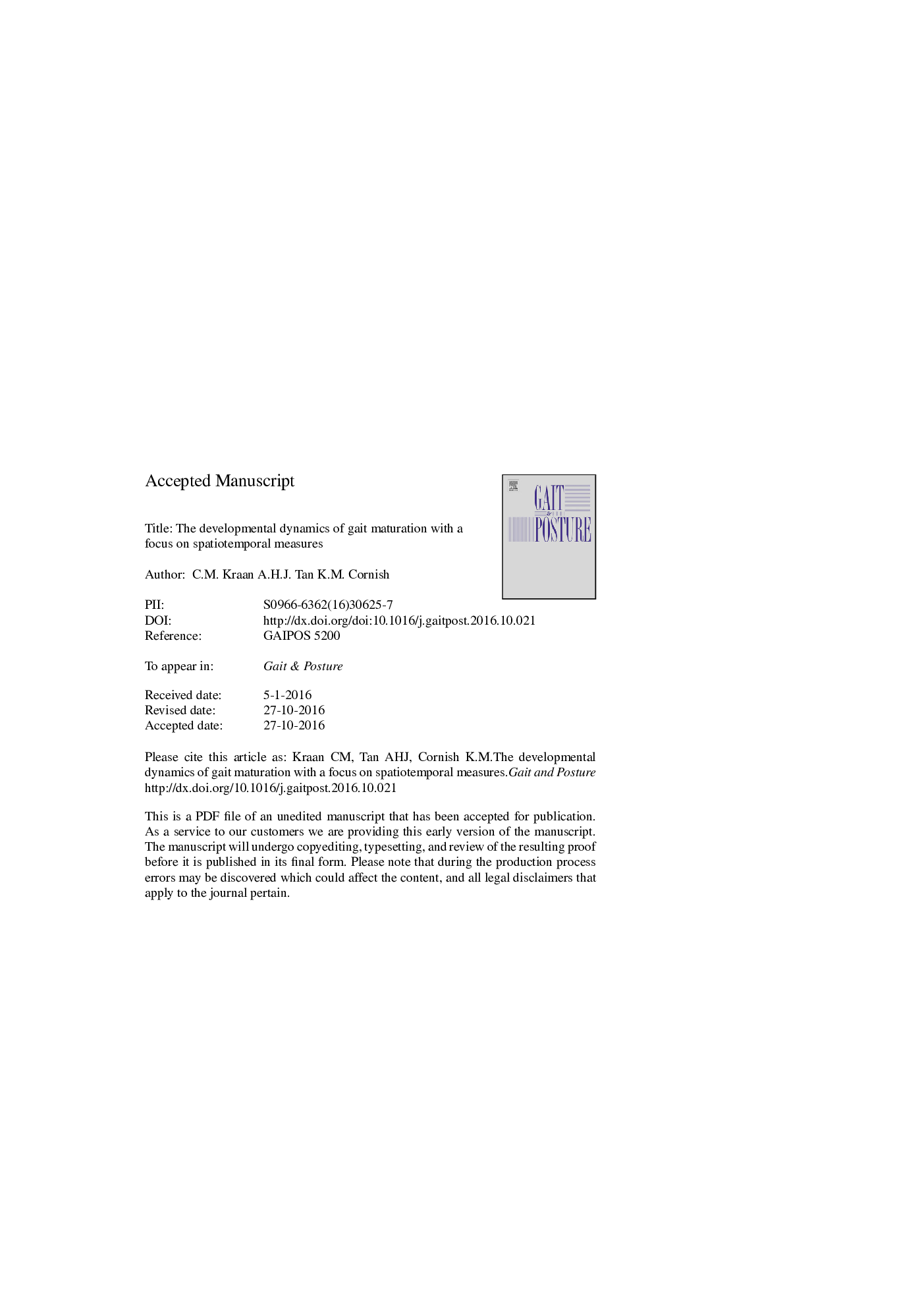| Article ID | Journal | Published Year | Pages | File Type |
|---|---|---|---|---|
| 8798700 | Gait & Posture | 2017 | 29 Pages |
Abstract
Gait analysis is recognised as a powerful clinical tool for studying relationships between motor control and brain function. By drawing on the literature investigating gait in individuals with neurological disorders, this review provides insight into the neural processes that contribute to and regulate specific spatiotemporal sub-components of gait and how they may mature across early to late childhood. This review also discusses the roles of changing anthropomorphic characteristics, and maturing sensory and higher-order cognitive processes in differentiating the developmental trajectories of the sub-components of gait. Importantly, although studies have shown that cognitive-gait interference is larger in children compared to adults, the contributing neurocognitive mechanisms may vary across age groups who have different types of attentional or cognitive vulnerabilities. These findings have implications for current models of gait maturation by highlighting the need for a dynamic model that focuses on the integration of various factors that contribute to gait though experience and practice. This is essential to elucidating why gait and other motor deficits are often contiguous with cognitive neurodevelopmental disorders.
Keywords
Related Topics
Health Sciences
Medicine and Dentistry
Orthopedics, Sports Medicine and Rehabilitation
Authors
C.M. Kraan, A.H.J. Tan, K.M. Cornish,
